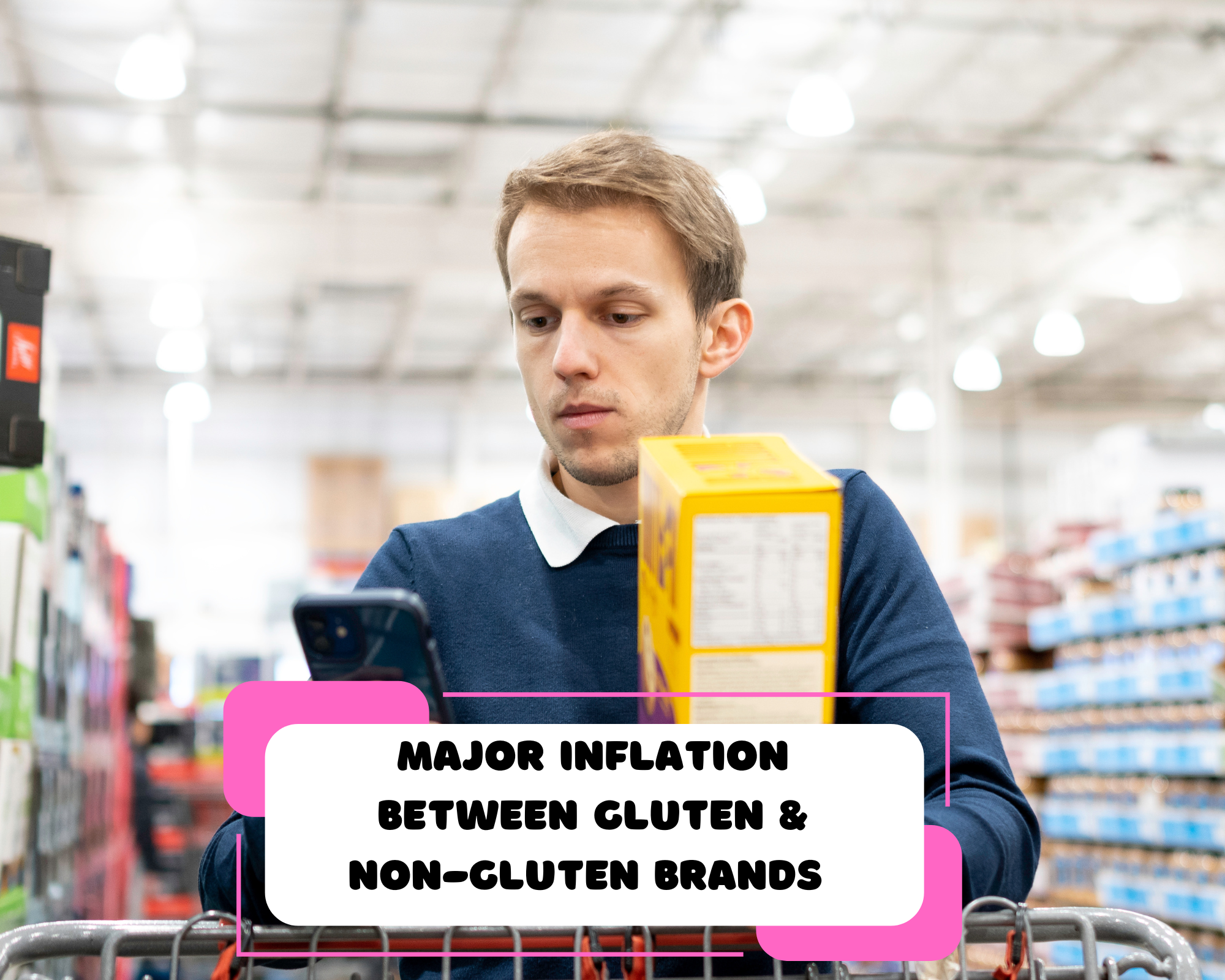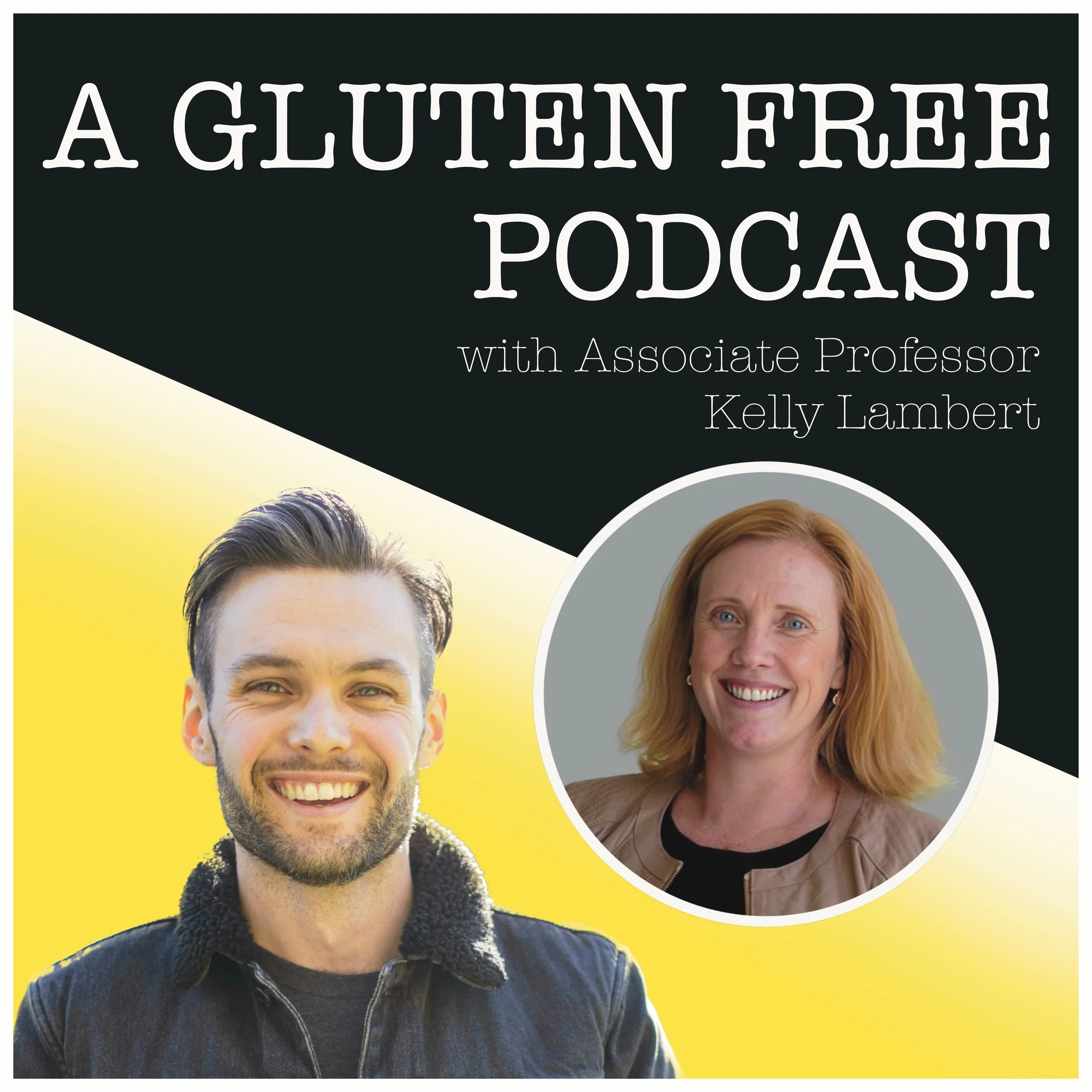Exposing The True Cost Of The Gluten Free Diet
Associate Professor Kelly Lambert reveals vital study data about gluten free cost
Hey Gluten Free Fam,
Ben had the pleasure of speaking with Associate Professor Kelly Lambert on A Gluten Free Podcast. The subject: the cost of the gluten free diet. While we all know there is a premium on gluten free brands in the market, the actual data exposed in a recent study by Lambert remains a major point of concern.
Lambert brings a wealth of qualifications and experience to the topic. As Academic Program Director for Nutrition and Dietetics at the University of Wollongong, NSW, Lambert was also a clinical dietitian at Wollongong Hospital for 25 years. To add further context, her husband, son and mother-in-law have been diagnosed with coeliac disease.
The discussion around affordability continues to be front of mind for individuals and families, especially during such dramatic cost of living pressures. Lambert helps to shed light on what the numbers reveal through her research spanning 12 years.
From where we were in 2012 to today, the figures still make for sober reading.
Highlighting Gluten Free Diet Struggle for the Underprivileged
The first study that Lambert oversaw to review cost and affordability with gluten free food would occur in 2012. One component was to examine the impact this would have on consumers who required unemployment benefits to survive.
“The cost for, say, the single young guy, he would have to have spent 74% of his welfare benefit on food to buy that (gluten free) basket,” Lambert said.
To make matters worse, that study participant would opt for gluten-containing foods because it was all they could afford. The result? They suffered with serious symptoms on a consistent basis.
“He's left with 26% of his income to live and maintain the rest of his life, which is just not going to happen. So it's no wonder that I had a young guy coming into hospital, not able to afford to eat a gluten free diet on benefits.”
Revisiting the 2012 Research Findings
2012 cost findings from Lambert’s study reveal significant rise for gluten free customers
“570% more expensive for (plain) flour. 315% more for wraps. 476% more for gluten free bread. The pasta was nearly 500% more.”
The 2012 study would assess five key food groups that are staples of any meal plan for the week: muesli, plain flour, wraps, bread and pasta. The aim? To see how much gluten free brands would compare. The results spoke for themselves.
“It was 400% more for muesli,” Lambert stated. “570% more expensive for (plain) flour. 315% more for wraps. 476% more for gluten free bread. The pasta was nearly 500% more. Across the board, all those staples were more expensive and not just a little bit, but extremely large differentials there.”
Repeated 2024 Study Exposes Lack of Progress
12 years after the first study was overseen, Lambert decided to revisit the subject again in 2024 to find out if any progress had been made with gluten free brands. With general food prices continuing to rise due to inflation across Australia, could any relief be found for gluten free consumers?
“We repeated (the study) just to have a snapshot of those staples foods in 2024,” Lambert explained. “What we found was the gluten free muesli, not only was it still more expensive, but it was 642% more expensive compared to 400% last time.”
While some categories did reduce in comparison to 2012, the percentages remained significantly higher than their gluten-containing counterparts.
“Plain flour last time was 570%, this time last year, it was 350%. It's still exorbitantly more expensive,” said Lambert. “Gluten free bread, it was 476% more, last year was 330% more. Wraps, more expensive, 450%. Pasta was nearly 500%, now it's 434% more expensive. Across the board, (the) differential remains, (but) there's some slight variation.”
Manufacturers could point to some of those decreased percentages as proof of greater affordability, but that would overlook the stark rise in grocery cost for all goods from 2012 to 2024. The fact remains: buying groceries has never been harder to budget for, and that struggle is amplified two, three or 6-fold for gluten free consumers.
Problems with Food Access and Consistency
To make matters more challenging for Lambert in order to conduct the study, simple access to the same gluten free brands created a major headache. More brands have made their presence known in the market, but being able to find them became a regular stumbling block.
“What I found interesting when we repeated just those staples was that the variety of gluten free foods in the store was more, but the availability was not always good,” she recalled. “Even just getting staples was really problematic to cost across the region that we looked at. You go to your regular store, and there's times where you just can't get what you need.”
Gluten Free Shopping: Not Comparing Apples with Oranges
Trying to find gluten free affordability between Woolworths and Coles? Good luck
If walking down the aisles and visiting the shops in-person created obstacles, perhaps online shopping was the best alternative? It’s the same principle that applies to buying other goods, so why wouldn’t it be effective for locating the best gluten free groceries on a budget?
As Lambert explains, the cost study exposes a very clear problem with that approach given the policies of Australian supermarket chains.
“If I looked at the Coles online store and wanted to buy carrots for this basket, they have the prices, say $2.60 per kilo. When you go to Woolworths, they don't ever cost it per kilo.”
With Coles and Woolworths creating a grocery monopoly on the Australian market, the only method of sorting items for affordability online is to judge them with the same price guides. For gluten free customers, stores don’t use the same measurements, ensuring there is no way for you to know which is more affordable.
“You're never going to be able to make a fair comparison as a shopper in the stores,” Lambert argues. “They cost it each, and that's the problem. You're not comparing apples with oranges… You can't do it fairly.”
Advocacy and Subsidy Efforts
The outcome of the 2012 and 2024 studies underline the necessity for serious action. Following Coeliac Australia’s petition for a subsidy to support those on a gluten free diet, Lambert is unequivocal in the need for government intervention.
“I really do believe that there needs to be some level of subsidy in Australia to help people,” she told Ben. “(Then) we (can) stop a person coming in and out of hospital because of their coeliac disease and not being able to comply with the treatment, which is a gluten free diet.”
Thanks to decades of experience in the field and seeing the impact of coeliac disease through lived experience, this means much more than just relieving people’s monetary concerns.
“My goal is to use this research as a tool for advocacy, because it's an equity issue, right?” she outlined. “If this was a person with diabetes and your medication was this much more expensive and you needed it to live, there'd be an uproar that people would have to pay so much more. But for people with coeliac disease, you don't have a choice. It's a medical necessity.”
Have any thoughts or feedback on the cost of a gluten free diet? We would love to hear from you. Find us at our Facebook Group or on our social handles on Instagram and TikTok.
Listen to Kelly Lambert’s interview in full with Ben on A Gluten Free Podcast Episode 186 right here.




